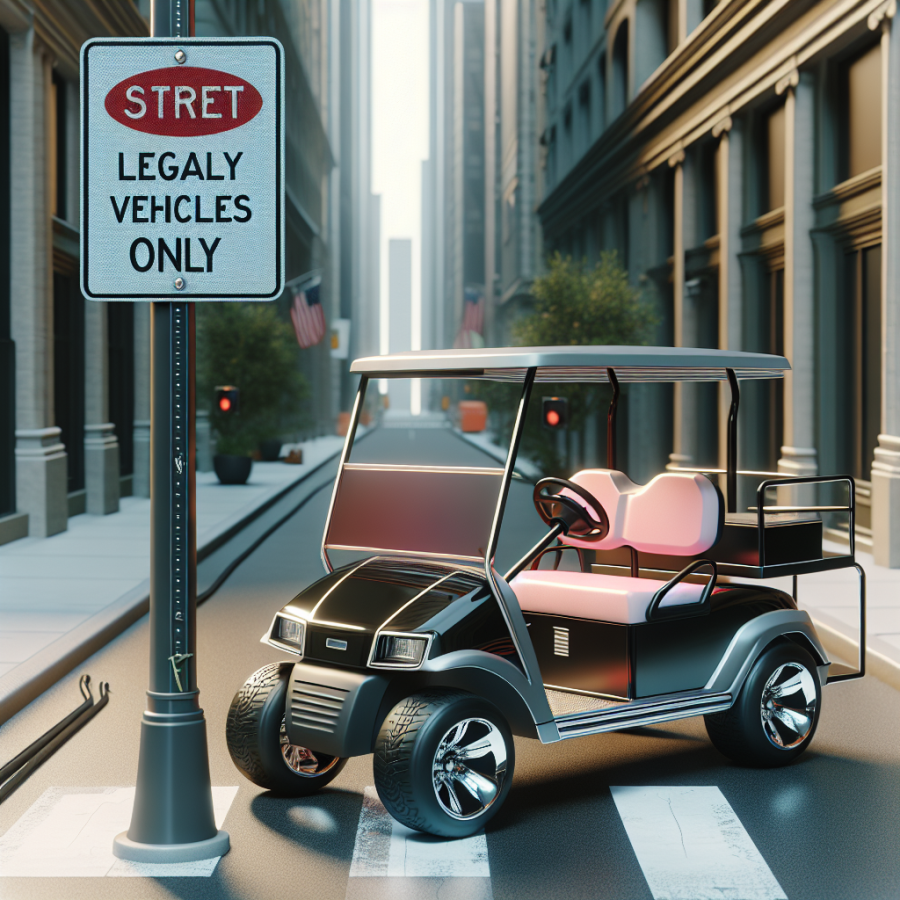Understanding the Laws Surrounding Golf Carts on Public Streets
Golf carts have become an increasingly popular mode of transport, particularly in retirement communities, rural areas, and vacation spots. As their use on public roads has expanded, so too have the laws and regulations governing their operation. There are several key areas to consider when looking at the legality of golf carts on public roads and what drivers need to know about these rules.
Federal Laws
On a federal level, golf carts fall under the jurisdiction of the National Highway Traffic Safety Administration (NHTSA). The NHTSA classifies golf carts as "low-speed vehicles" or LSVs if they are capable of speeds between 20-25 miles per hour. These LSVs can legally operate on most streets, but only if they meet certain safety standards. These standards often include having headlamps, turn signals, stop lamps, reflectors, parking brakes, rearview mirrors, windshields, and seat belts.
State Laws
State laws can vary and may have different specifications or rules about operating golf carts. Some states may allow golf carts on public roads if the vehicle can reach certain speeds, while others restrict them outright. For instance, in Arizona, golf carts are permitted on roads with speed limits up to 35 miles per hour, while in North Carolina, they’re allowed only in cities or towns that have approved their use. It is important to check with the respective state’s Department of Motor Vehicles for specifics, as some states require inspection, registration, and even liability insurance.
Local Laws
While state laws provide a broad overview, local laws can vary widely from town to town. Some municipalities might enforce strict restrictions regarding hours of operation, designated routes, and parking regulations, while others may be more flexible. Local governments may have ordinances in place for using golf carts on public roads that can include specifics about required safety equipment, age of the driver, and whether the golf cart needs to be registered and insured. It's advisable to check with a city or town's local ordinances before taking your golf cart out on public streets.
Golf Cart Driver Laws
In most places, golf cart drivers must abide by the same rules and regulations as those in traditional motor vehicles. Such rules often include obeying traffic lights and signs, adhering to speed limits, and not driving under the influence of alcohol or drugs. Age requirements may also be in place; some states mandate that golf cart drivers must be at least 16 and possess a valid driver's license.
Read also:
Finding the Balance: Determining How Much Golf is Too Much
Essential Factors Influencing the Legality of Golf Carts in Urban and Suburban Areas
Understanding the various factors that influence the legality of golf carts in urban and suburban areas is crucial for anyone considering its use outside a golf course. Different jurisdictions have different laws and regulations regarding their operation on public roads. These factors usually revolve around safety, golf cart capabilities, infrastructure, and other aspects that local government authorities deem crucial to maintain safe and efficient road use.
One of the most fundamental factors that influence the legality of golf carts is safety. Golf carts are typically open vehicles with low speeds, and may not have the same safety features as traditional automobiles such as airbags or seat belts. Therefore, to ensure the safety of both golf cart users and other road users, cities and towns may restrict their use to certain areas, such as restricted neighbourhood roads with low speed limits, or roads that are not heavily trafficked.
Golf cart capabilities, such as top speeds and equipment, also play a significant role. It's worth pointing out that most regions differentiate between golf carts and Low Speed Vehicles (LSVs), the latter being capable of higher speeds and often equipped with more safety features. The regulation often depends on whether the golf cart is considered an LSV or just a regular golf cart. For example, certain cities may only permit golf carts on public streets if they have been modified to meet the requirements of an LSV.
Infrastructure suitability is another critical consideration. Cities and municipalities must ensure that their road infrastructure can accommodate golf carts without causing unnecessary traffic congestion or other issues. The presence of adequate golf cart paths or lanes, wide shoulders, or similar provisions will influence whether a city or town allows golf carts on its streets.
While not as prominent, environmental concerns may also play a role in determining the legality of golf carts. Many golf carts are electric, making them a greener alternative to cars, especially for short trips. This environmental consideration might encourage some locales to permit their use and simultaneously push towards eco-friendly initiatives.
Lastly, local perception and public opinion can be a defining factor. If community members feel that golf carts would disrupt the tranquility of the area or impose safety risks, then the local governing bodies may be more inclined to enact stricter regulations.
In conclusion, legalities surrounding the use of golf carts in urban and suburban areas depend on a host of factors, making it a broadly varied and locally determined issue. For specifics on their use, users are advised to refer to their respective state and local laws to ensure they comply and operate these vehicles safely.




